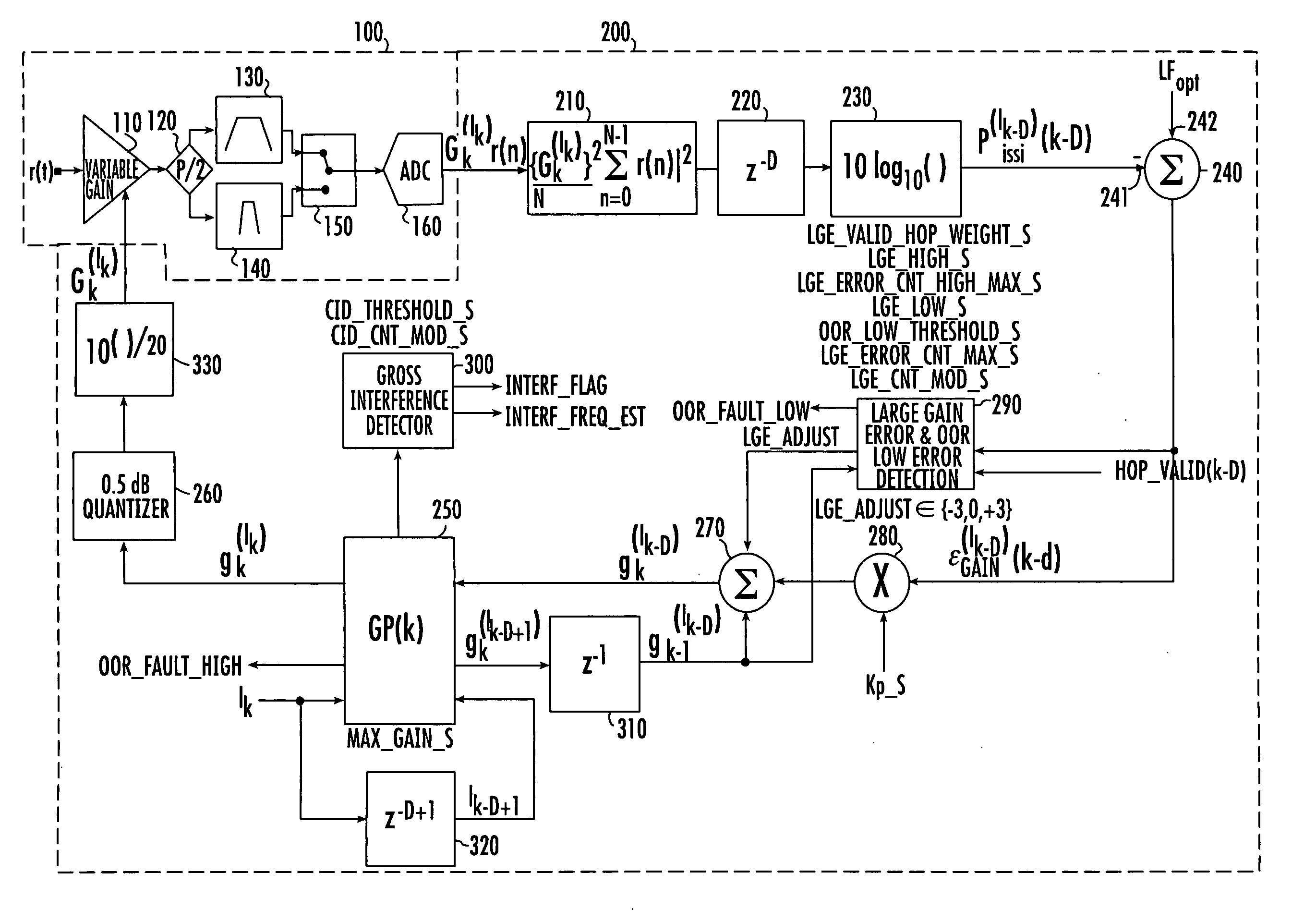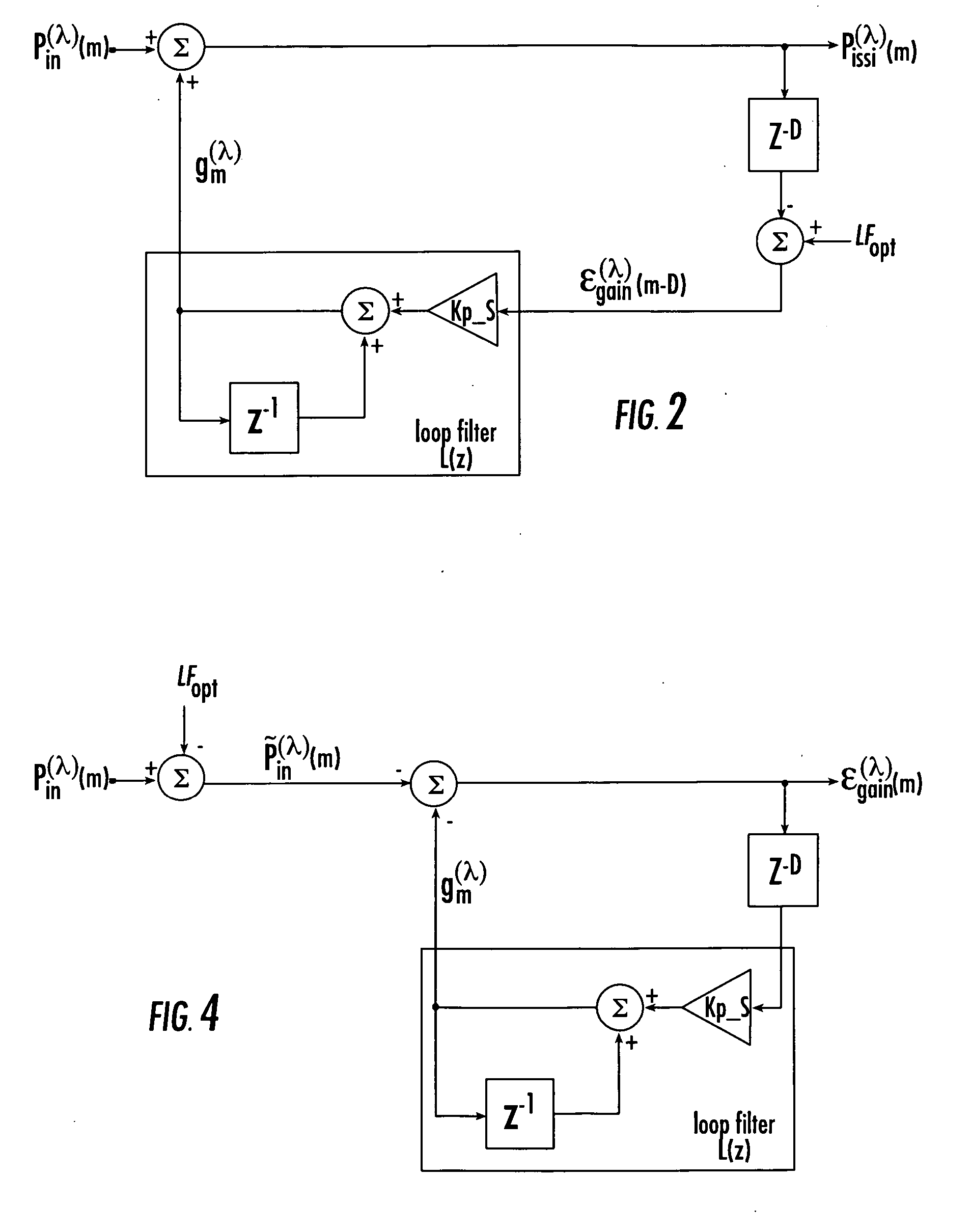Frequency selective automatic gain control with dual non-symmetric attack and release times and interference detection feature
a frequency selective and automatic technology, applied in the field of communication systems, can solve the problems of receivers not recovering data, preventing the successful recovery of data, and distortion of waveforms, and achieve the effect of large gain error (lge) handing
- Summary
- Abstract
- Description
- Claims
- Application Information
AI Technical Summary
Benefits of technology
Problems solved by technology
Method used
Image
Examples
Embodiment Construction
[0044] Before describing the present invention, it should be observed that the invention resides primarily in a prescribed novel arrangement of conventional telecommunication circuits and components, and attendant communication control software in an attendant digital signal processor. As a result, the configuration of such circuits. and components and the manner in they are interfaced with the communications control software have, for the most part, been depicted in the drawings by readily understandable functional block diagrams, that contain operational flow processing therein, which show only those specific aspects that are pertinent to the present invention, so as not to obscure the disclosure with details which will be readily apparent to those skilled in the art having the benefit of the description herein. Thus, the block diagram and associated communication control flow diagrams are primarily intended to show the major components of a preferred embodiment of the invention i...
PUM
 Login to View More
Login to View More Abstract
Description
Claims
Application Information
 Login to View More
Login to View More - R&D
- Intellectual Property
- Life Sciences
- Materials
- Tech Scout
- Unparalleled Data Quality
- Higher Quality Content
- 60% Fewer Hallucinations
Browse by: Latest US Patents, China's latest patents, Technical Efficacy Thesaurus, Application Domain, Technology Topic, Popular Technical Reports.
© 2025 PatSnap. All rights reserved.Legal|Privacy policy|Modern Slavery Act Transparency Statement|Sitemap|About US| Contact US: help@patsnap.com



